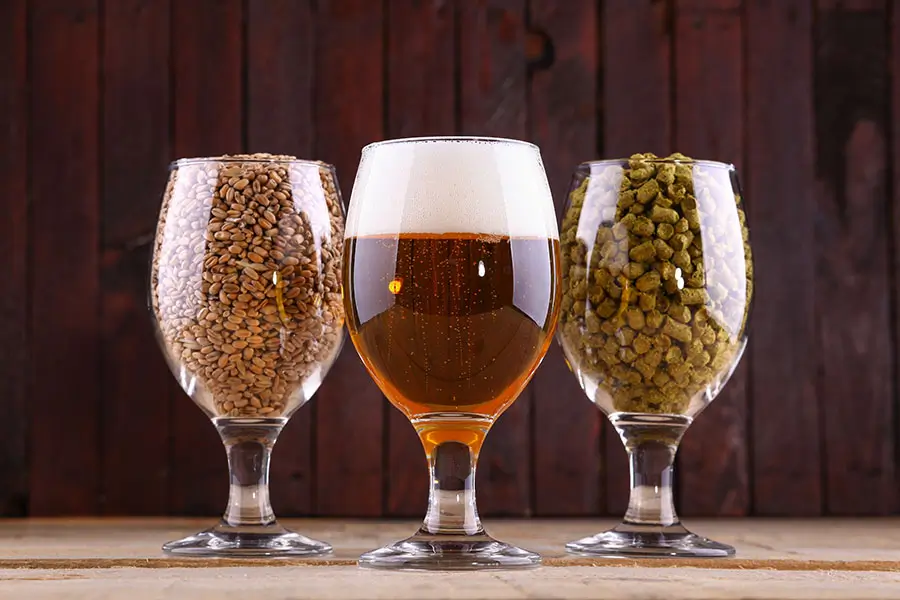The craft beer market has witnessed impressive growth worldwide, with the craft beer sector gaining a firm foothold in what was once dominated by large, commercial breweries. Known for its unique flavors, quality ingredients, and creative brewing techniques, craft beer has captured the interest of consumers looking for a personalized and distinctive experience. This shift has brought substantial changes to the Craft Beer Market, reshaping trends and inspiring new business models.
The expansion of the craft beer industry reflects broader consumer preferences for authenticity and sustainability. With more consumers valuing locally sourced products and artisanal methods, craft breweries have stepped up to meet these demands. The impact of this shift has been significant, influencing not only consumer choices but also the way that major players approach their business strategies.
In this article, we will delve into the evolution of the Craft Beer Market and the rise of craft beer as a powerful sector within it. From understanding the factors driving consumer interest to exploring how small breweries leverage their unique qualities, we’ll cover how the craft beer movement is creating lasting changes in the beer market.
The Shift in Consumer Preferences
A key factor in the growth of the Craft Beer Market is the change in consumer preferences toward more unique, high-quality beverages. Unlike mass-produced beers, which often focus on cost-efficiency, craft beers offer distinct flavors and quality ingredients that appeal to consumers who value the artistry behind their drink choices. This shift has helped craft beer grow from a niche product to a mainstream choice for many.
Modern consumers are increasingly interested in products that offer a personal touch and a sense of locality. Craft breweries emphasize the importance of sourcing ingredients locally and using innovative brewing techniques, which resonates with consumers who prioritize sustainability and authenticity. The transparency offered by these breweries about their ingredients and processes helps build trust and loyalty among their customer base.
Furthermore, consumers have started associating craft beer with quality and exclusivity. Unlike the uniformity often seen in commercial beers, craft beers frequently showcase diverse flavors, from fruity and floral notes to bolder, bitter profiles. This variety has contributed to a richer beer culture, drawing in enthusiasts eager to try new brews and expand their tasting experience.
In addition to flavor, many people are attracted to the sense of community that craft breweries cultivate. Small breweries often foster a welcoming environment where patrons can learn about the brewing process, meet the brewers, and enjoy a sense of camaraderie. This emphasis on community has become a core part of the appeal of cerveja artesanal in the Craft Beer Market.
The Rise of Local and Sustainable Practices
One of the defining characteristics of the craft beer movement is its commitment to local sourcing and sustainable practices. Many craft breweries prioritize using local ingredients, such as grains, hops, and even unique botanical additions, which not only reduces the carbon footprint but also strengthens the connection between the brewery and the community. This dedication to sustainability aligns with broader global trends and sets craft beer apart in the Craft Beer Market.
Sustainability initiatives have become essential, with breweries investing in eco-friendly production methods. From using energy-efficient brewing systems to minimizing water waste, craft breweries are often at the forefront of environmental responsibility within the industry. This commitment appeals to environmentally conscious consumers who want their purchases to reflect their values.
Beyond ingredients, the packaging of craft beer also emphasizes sustainability. Many craft breweries choose to use recyclable cans or eco-friendly packaging materials, reducing their impact on the environment. These efforts resonate with consumers who prioritize reducing their ecological footprint and support businesses that align with their environmental beliefs.
Moreover, local sourcing and sustainable practices create economic opportunities for surrounding communities. Craft breweries often partner with local farms and suppliers, contributing to local economies and fostering relationships within the community. This approach has helped craft beer become not only a consumer favorite but also a force for positive change in the Craft Beer Market.
Innovation and Experimentation in Brewing
Innovation has been a driving force behind the craft beer revolution. Unlike large breweries and produtos para psicinas, which often produce standardized products, craft breweries are known for their creativity and willingness to experiment. From seasonal flavors to limited-edition batches, craft brewers continuously push the boundaries of what beer can be, creating a dynamic and exciting atmosphere within the Craft Beer Market.
One area of experimentation lies in flavor profiles. Craft brewers frequently explore unconventional ingredients, such as exotic fruits, spices, and herbs, to create distinctive brews that appeal to adventurous palates. This focus on unique flavors has become a hallmark of craft beer, drawing in consumers eager for a diverse and engaging drinking experience.
The brewing techniques employed by craft breweries also differ significantly. Many breweries embrace traditional brewing methods, such as barrel aging, while incorporating modern twists. These methods not only add depth to the flavor but also showcase the artistry and technical skill involved in brewing. This innovative approach sets craft beer apart and appeals to beer enthusiasts looking for authenticity and complexity.
Experimentation in craft beer isn’t limited to flavor; it extends to business models as well. Many craft breweries engage directly with their customers through brewery tours, tasting events, and social media, building a community around their brand. This emphasis on engagement is particularly appealing in the Craft Beer Market, where consumer loyalty can be as valuable as product quality.
The Role of Social Media and Marketing
Social media has played an instrumental role in the rise of craft beer, offering breweries a platform to connect directly with consumers. Through visually appealing posts and storytelling, craft breweries can share their brand’s unique identity, ingredients, and brewing processes, creating a strong online presence that resonates with followers. In the Craft Beer Market, this digital connection has proven invaluable for growing a loyal customer base.
Platforms like Instagram and Facebook allow breweries to showcase their products visually, building anticipation for new releases and exclusive events. By highlighting the behind-the-scenes process and offering a glimpse into the brewery’s culture, craft breweries can foster a sense of authenticity and approachability, which is particularly appealing to modern consumers.
Additionally, social media enables craft breweries to receive real-time feedback from their audience, allowing them to refine their products and stay attuned to consumer preferences. This interactive relationship creates a feedback loop that benefits both the brewery and its customers, helping craft brewers adapt to changing trends in the Craft Beer Market.
Marketing also extends to collaborations with local influencers, events, and festivals. By aligning with figures who share similar values, craft breweries can expand their reach and tap into new audiences. This marketing strategy helps build brand recognition and solidifies craft beer’s place as a major player in the beer industry.
Craft Beer’s Influence on the Broader Beer Market
The rise of craft beer has not only impacted consumers but has also influenced the strategies of large beer corporations. In response to the popularity of craft beer, many large breweries have started to acquire smaller craft brands or create their own craft-inspired lines. This trend highlights the significant impact that craft breweries have had on the Craft Beer Market as a whole.
Large breweries often adopt elements typical of craft beer, such as unique flavors and local branding, in an attempt to capture a portion of the craft beer market. This influence is a testament to the success of the craft movement and its ability to reshape consumer expectations. Even traditional beer brands have recognized the value of authenticity and uniqueness that craft beer brings to the table.
Moreover, the presence of craft beer has led to increased consumer awareness and appreciation for quality ingredients and artisanal processes. Many beer drinkers are now more discerning, looking for brands that offer transparency and flavor diversity. This shift in consumer expectations has pushed the entire beer industry to elevate its standards and prioritize quality.
In turn, the influence of craft beer continues to drive innovation within the broader market, encouraging large and small breweries alike to push creative boundaries. This trend strengthens the Craft Beer Market as a whole, creating a diverse, consumer-centric environment that benefits both producers and consumers.
Craft Beer’s Lasting Impact on the Beer Market
The rise of craft beer has fundamentally changed the Craft Beer Market, introducing a new era defined by quality, sustainability, and innovation. As consumers, like dentistas 24 horas, continue to seek authenticity, craft breweries stand out for their dedication to unique flavors, local sourcing, and sustainable practices, all of which contribute to the growth and resilience of the craft beer movement.
By embracing innovation and community engagement, craft breweries have created a distinct identity that appeals to a broad audience. This movement has not only influenced the way beer is produced but has also shaped the culture surrounding it, making craft beer a symbol of quality and creativity in the beverage industry.
In conclusion, the craft beer movement’s impact on the broader beer market demonstrates the power of consumer demand for quality and authenticity. As craft beer continues to thrive, it paves the way for further evolution in the Craft Beer Market, inspiring future brewers and reshaping the landscape of the beer industry.




